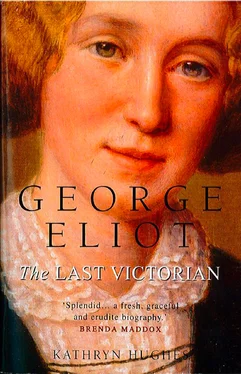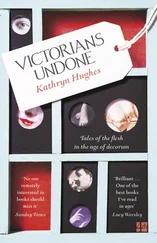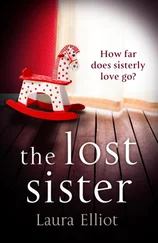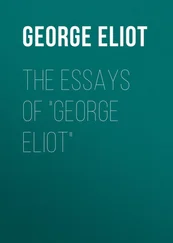Coventry made Nuneaton look dingy and parochial. With its population of 30,000 and its fast railway to London, it crackled with purpose. Instead of the poky cottages with their clanking handlooms, there were steam-powered factories to which the workers walked every morning. And although the local ribbon trade fluctuated wildly, dependent on the vagaries of fashion and cheap foreign imports, it was still sufficiently sound to support a wealthy middle-class élite of manufacturers. Linked through a cat’s cradle of business partnerships and marriage, these families managed to combine a handy knack of making a profit with a busy social conscience. Educated, progressive and earnest, they favoured a broad range of social and municipal reform designed to improve the living conditions of the people who worked for them. It was men like these, rather than the old alliance of gentleman and parson, who increasingly dominated the city council.
If Coventry seemed to offer the perfect environment for Mary Ann, then the house Robert Evans took on the outskirts of the city showed her off to best advantage. Bird Grove was an impressive Georgian semi-detached building, set back from the Foleshill road in its own woody grounds. It was large enough for both Mary Ann and Robert to have their own studies. Flanked by similar properties owned by the city’s worthies, Bird Grove was a testimony to its new tenant’s social standing. Although Robert Evans was not well known in Coventry, his choice of house announced that here was a man who, even in retirement, regarded himself as a pillar of the community. On hearing that Evans was about to move into the new house, his former employer Lord Aylesford ‘Laphd and said they would make me Mayor’. 24
Although it was a relief to Mary Ann finally to move to Coventry in the middle of March 1840, leaving Griff was a wrench: ‘it is like dying to one stage of existence,’ she told Martha Jackson. 25 The strong feelings she had developed for the countryside, its buildings and people, as she drove around the Arbury estate with her father, had not dissolved over the intervening years of bookishness. Griff farmhouse would always remain the shape and colour of her childhood, the scene of those fierce loves which Wordsworth told her were the root of the adult self. Translated to Foleshill she found herself experiencing ‘a considerable disturbance of the usual flow of thought and feeling on being severed from the objects so long accustomed to call it forth’. 26
Moving to Coventry in order to give Mary Ann a stab at courtship sounded like a good idea, but it soon became clear that neither she nor her father knew where to start. Evans’s contacts were all based in Griff, which was five miles away, or the even more distant Nuneaton. Chrissey and Fanny were both nearby, but neither was in a position to launch her younger sister into Coventry society. Ever energetic, despite his increasing frailty, Evans decided to make church attendance the starting point of their new life. The obvious place to go was Trinity, in the centre of Coventry, since its vicar had previously owned the lease on Bird Grove. Within a month of moving to Foleshill, Evans was acting as sidesman. Father and daughter frequently made trips to other churches in the area to hear a particular clergyman preach. Ironically, just as Mary Ann was beginning to have serious, though still secret, doubts about her faith, her father was becoming more intense and discriminating in his church attendance.
During these first few months in Coventry, there was no outward change in Mary Ann to suggest that she was anything other than a devout Evangelical Anglican. Her dour, censorious manner continued to repel those who made tentative approaches towards her. A family called Stephenson, friends of Maria Lewis, talked to her at church and said that they looked forward to seeing her soon. Yet neither Mrs Stephenson nor her two young daughters called at Bird Grove, not sure if their friendship was really wanted. With the hypersensitivity of the very shy, Mary Ann felt the snub keenly and hit back with lofty disdain, declaring in a letter to Maria that the two Stephenson girls ‘possess the minimum of attraction for me’. 27
All the same, there is a hint that she was beginning to wonder whether other people – just like the silly Misses Stephenson – did not sometimes have the right idea. On one occasion she found herself shocked by the bright clothes of one local congregation, before going on to ponder ‘how much easier life would be to her, and how much better she should stand in the estimation of her neighbours, if only she could take things as they did, be satisfied with outside pleasures, and conform to popular beliefs without any reflection or examination’. 28 As it dawned upon her that her search for spiritual truth might mean that her current social isolation would soon be replaced by total ostracism, Mary Ann longed for the easy life which came with a numb conscience.
Still, she was not completely solitary during these first months in the city. The Misses Franklin tried to be helpful, singing her praises to their extensive circle of cultured, nonconformist friends. One important introduction was to the Sibree family, who lived not far away. Mr Sibree was minister of the local Independent Chapel, John junior was preparing to follow him into the ministry and sixteen-year-old Mary was a clever, lively girl who would become the first of the many ardent younger female admirers who clung to Mary Ann throughout her life.
An even more crucial contact was Elizabeth Pears, the neighbour who Mary Ann had hinted to Maria was ‘growing into the more precious character of friend’. 29 Mr and Mrs Abijah Hill Pears, to give them their magnificent full name, lived in the house adjoining Bird Grove. Mr Pears, a ribbon manufacturer, was a leading Liberal in the city and about to be made mayor. He was in partnership with one of the Misses Franklin’s brothers and it was through them that Mary Ann came to meet his Evangelical wife. The Franklins, as we have seen, introduced their distinguished former pupil with the oddly textured compliment that not only was she a ‘marvel of mental power’ but also ‘sure to get something up … in the way of a clothing-club’. Sure enough, within a few weeks of moving into the area Mary Ann had set up just such a scheme for unemployed miners and had organised the older and more established Mrs Pears into helping her. 30
Although on the surface Mary Ann continued to behave with her usual pious busyness, her private reading during these first months in Coventry was taking her deeper into unorthodoxy. The frequent starting points for her speculations were books which had been written to bolster literal interpretations of the Bible, but which raised more questions than they could answer. Books like Isaac Taylor’s Physical Theory of Another Life (1836) and John Pye Smith’s Relation between the Holy Scriptures and Some Parts of Geological Science (1839) attempted to respond to the onslaught made on orthodox Christianity by the new discoveries in physical science about the material origins of the earth. Both, however, failed to deal with these counter-proposals and ended up weakening their case. Other authors whom Mary Ann now encountered had already made the journey from orthodoxy and were able to present their material in a more open manner. John Pringle Nichol, who wrote The Phenomena and Order of the Solar System and View of the Architecture of the Heavens (1839), both of which gave Mary Ann great pleasure, had felt obliged to give up Holy Orders because of the change in his religious beliefs.
But by far and away the most influential single book Mary Ann came across during these months was Charles Hennell’s An Inquiry Concerning the Origin of Christianity . It had first been published in 1838, and a second edition – the one which Mary Ann bought – appeared in August 1841. Exactly when she read An Inquiry is unclear, but it is certainly the case that she was aware of the book’s existence and general argument by the autumn of 1841, not least because all the major participants in its remarkable genesis were related to her friend and neighbour Elizabeth Pears.
Читать дальше












